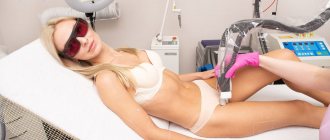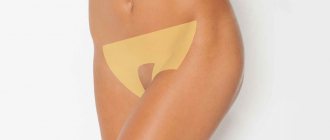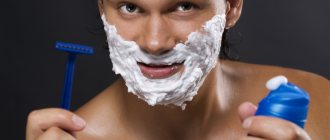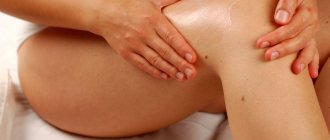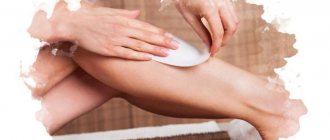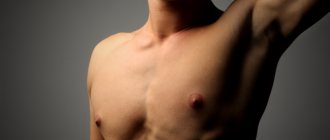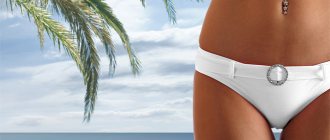Cream anesthetic preparations help cope with discomfort during a variety of traumatic and skin-irritating cosmetic procedures. They have practically replaced injections of painkillers, because cream anesthesia gently and comfortably numbs the skin, and it is also very convenient to use.
This type of product is suitable for people who experience psychological fear of removing body hair using sugaring or waxing, or before mesotherapy, biorevitalization, or permanent makeup procedures. The anesthetic cream easily copes with its task, allowing the client to relax, not worry about unpleasant discomfort, and make a choice in favor of salon procedures. Cream anesthesia is very popular; it can be found in almost any cosmetology salon in the Russian Federation and other countries.
The best pain relieving creams for depilation
To compile the rating, data on the properties and effectiveness of drugs, patient reviews and expert assessments, as well as affordability were used.
Table - The best pain-relieving creams for depilation and hair removal
| Place | Name | Points |
| 7 | Lidocaine | |
| 6 | Depiflax | |
| 5 | Akriol Pro | |
| 4 | Light dep | |
| 3 | Any stop | |
| 2 | Dr. Numb | |
| 1 | Emla | |
Designations:
| ||
Rating of pain-relieving depilatory creams by price
When compiling the price rating, dosages and the average cost of the products were taken into account.
Table - Comparison of pain-relieving creams and ointments for depilation, starting from the most inexpensive
| Name of the product | Dosage | average cost |
| Lidocaine | 38 g 650 doses | 350 |
| Depiflax | 250 ml | 535 |
| Light dep | 30 ml | 750 |
| Akriol Pro | 30 g | 990 |
| Emla | 5 g | 1057 |
| Dr. Numb | 30 g | 1150 |
| Any stop | 50 ml | 1800 |
Designations:
| ||
Categories of anesthetic creams for depilation by method of application
External (primary anesthesia)
The products are applied to intact skin, that is, before the start of the procedure. For external anesthesia during depilation, anesthetic creams, gels, ointments, and sprays are used. Lidocaine is often used as a spray.
In addition to the active substance itself, essential oils of various plants are added to it, which have a calming effect. Other anesthetic sprays, as well as ointments and gels, are also based on lidocaine. The substance is a good local anesthetic that blocks the conduction of impulses along nerve endings.
Secondary anesthesia
Secondary anesthetic agents are used during the procedure and applied to already damaged skin. Painkillers of this group constrict blood vessels and reduce lymph secretion. Such products prolong the effect of primary drugs, for example, during a long procedure or increased skin sensitivity.
For secondary anesthesia, Dr. wipes are used. Numb.
Pain relief at home
The most painful methods of getting rid of hair are sugaring, waxing, gelling, depilation with an epilator or laser hair removal. These types are similar in the technique of removing vegetation; hairs are removed from the roots, but the hair follicles are not destroyed. The smooth effect lasts an average of 2 weeks. Usually, to reduce pain during hair removal, you can use some of the following methods, which are often sufficient without resorting to medications:
- Steaming the skin. It is necessary to make a hot compress or take a hot bath 6 hours before the procedure and lie in warm water for at least 15 minutes. This is the optimal time for the pores to open as much as possible and removing vegetation is a breeze.
- Scrubbing. Light exfoliation before the procedure will help reduce the pain threshold and also make it easier to pull out excess hair.
- A cold compress reduces sensitivity. Apply a freezing substance to the area to be epilated, then wait until it dries completely.
- Good skin tension during tearing. To do this, you need to press on the depilation site with your hands to get a tension effect.
- Manual massage. Massage movements in the epilation area will help reduce pain.
- You can dull the pain during the procedure with proper breathing; you need to remove hairs while taking a deep breath, in which case the pain will be reduced to a minimum.
- Menstrual cycle. Depilation is best done on the second or third day after menstruation, since on these days the level of the pain threshold is reduced to a minimum, experts say. The most painful sensations occur during ovulation and a few days before the start of menstruation.
Release form
Creams
Emla cream is used for sugaring, waxing, electrical, laser and photoepilation. Anesthetizes due to the action of lidocaine and procaine.
Light dep cream contains castor oil, which provides skin hydration. Recommended for pain relief for up to 15 minutes (with a single use) and up to 1 hour (when applied 2-3 times at certain intervals).
Acriol Pro cream contains lidocaine and prilocaine, which provide an analgesic effect, as well as castor oil for additional moisturizing and softening.
Gels
Ane Stop gel has a water-silicone structure and contains lidocaine. Effective for depilation of deep bikini areas. Along with the analgesic effect, it has an anti-edematous and anti-inflammatory effect.
Depiflax gel contains essential oils of tea tree, rosemary and chamomile extract, as well as menthol. The product cools and prevents irritation and ingrown hair.
Anesthetic wipes
The wipes are impregnated with painkillers: prilocaine and epinephrine. Designed for procedures in small areas, such as eyebrows or lips.
Epilators with different attachments
Modern technologies make the process of hair removal with an epilator as comfortable as possible. For this purpose, manufacturers have developed numerous attachments of different types that reduce pain.
- Cooling depilator. An epilator with a cooling attachment has a small container in its assembly into which water is poured and placed in the freezer for a while until ice forms. The cooling effect is that this nozzle blows cold air onto the skin. It reduces the sensitivity of pain receptors and prevents irritation.
- Massage. The depilator is equipped with a massage roller, which allows you to carry out the procedure in the bikini area without feeling pain.
- Water depilator. This device is made of specially rubberized inserts (they prevent water from penetrating into the epilator itself). They can be manipulated under water; the water softens the removal of hair follicles and the owner of such a device feels comfortable during the hair removal procedure.
How to choose an anesthetic cream for depilation
Before using any product, you must ensure that you are not allergic to any component.
For bikini depilation
The bikini area is considered quite sensitive, so the numbing cream should have a long-lasting effect throughout the procedure.
Emla cream is well suited for this; it is available in the form of patches on a fabric base, impregnated with two anesthetics - lidocaine and prilocaine. For deep bikini areas, Ane stop or Light deр gel is effective.
For facial hair removal
The skin on the face is thinner and more delicate, and the blood vessels are located closer than on other parts of the body. Therefore, hair removal requires more gentle means so as not to damage the dermis.
Facial ointments contain moisturizing and softening ingredients, such as almond oil or aloe vera extract. But nevertheless, you should be careful with such soft agents. Before applying to the face, you need to test the tolerance of the cream.
For leg epilation
Leg hair removal products contain more active ingredients that destroy the hair structure. This concentration allows you to cope with coarse hair. But those who have sensitive skin, even on their feet, may feel irritated.
For underarm hair removal
An underarm hair removal cream should be easy to apply and not contain a high concentration of active ingredients. They contain softening and moisturizing ingredients. For this area it is better to use Light dep cream.
Lidocaine.
A substance that is used in almost all cream anesthetics is lidocaine. It performs the main function of superficial anesthesia and blockade of pain impulses. The drugs differ in the content of this substance; many creams also use additional anesthetic substances such as prilocaine, benzocaine. But it is worth noting that the effectiveness of the drug is not due only to the high content of any one component. The correct combination of cooling components is important, which gives a lasting and safe effect.
Anesthetic cream for sugaring
Sugaring - sugar hair removal, although it is considered more gentle compared to waxing, is nevertheless a painful procedure. Like other types of hair removal, it requires the use of anesthetics, such as lidocaine ointments.
Light dep cream is often used to remove sugar hair. It is applied an hour before the procedure using a cotton swab. After some time, it is reapplied, preventing the previous layer from drying out.
You can wrap it in cling film or a plastic bag. After waiting the time specified in the instructions, the master begins the procedure.
Emla cream for sugaring is applied according to the general scheme, but does not require a second layer. A single application and wrapping with film or bag is enough.
Ane stop gel is applied 30 minutes before the procedure in 3 doses. After each time, the remaining gel must be removed and new layers of the product applied. After the last stage and removal, sugar hair removal begins.
Dr. Numb is applied to skin previously cleansed with soapy water. Apply a thick layer and cover with film. After 30 minutes, the wrap is removed and the remaining cream is removed. The treated skin is ready for sugaring.
For sugar hair removal, you can use Lidocaine spray. The product is applied only to dry and well-cleansed skin. Before use, it is better to steam it with a shower or warm compress.
Immediately after spraying, the treated areas should be wrapped in film and kept for 40-90 minutes, depending on the volume and complexity of the procedure. After the specified time, the remaining substance is removed, the skin is cleaned and epilation begins.
What can you do yourself?
40 minutes before the procedure, apply anesthetic cream to the hair removal area, under cling film. The timing of the procedure is usually up to the patient. It is believed that the body is least sensitive to pain after lunch, around three o'clock in the afternoon - sensitive individuals are recommended to epilate at this time.
The day of the cycle also matters. It is believed that girls feel best and are least sensitive to pain immediately after the end of their periods, i.e. from the fifth to tenth days of the cycle. At this time, you can safely plan the most unpleasant procedures at home or in the clinic.
It is important to follow all of your doctor's instructions regarding preparation for the procedure. For example, you should avoid the sun and not use self-tanner 2 weeks before laser hair removal. The lighter the skin, the less discomfort during treatment.
A fresh tan is one of the contraindications for performing the procedure; the doctor may refuse to remove hair using a laser if you neglected the recommendations and visited a solarium shortly before your visit to the clinic. The only exception is Moveo hair removal; it is also performed on tanned skin.
Another example is recommendations regarding hair length. For sugaring and waxing, you should grow your hair longer. For laser hair removal, on the contrary, it is not recommended that the length of the bristles be more than 2-3 mm. When epilating with the Moveo alexandrite laser, the skin should be hair-free. Compliance with such requirements not only makes the procedure more effective, but also reduces pain.
Listen to the doctor’s advice, and then you will not experience discomfort during hair removal!
How to apply cream correctly
Features of applying anesthetic creams depend on the location of hair removal and the properties of the drug.
Basic rules of application:
- The cream is applied in sufficient quantity specified in the instructions. If required, cover with another layer on top. Do not allow it to dry out.
- The anesthesia site is covered with cling film or a regular plastic bag. This will ensure maximum penetration of substances into the skin by increasing moisture. The film will not allow the water contained in the cream to evaporate, which will create favorable conditions for the action of painkillers.
- The applied cream is kept for the time specified in the instructions. For example, for the bikini area it will be at least 40-60 minutes. Pain relief does not begin immediately, but after 15-20 minutes and reaches its peak after an hour. After removing the cream, the anesthesia effect lasts for several hours.
How to numb the skin before epilation?
If during the procedure the word “pain” is constantly spinning in your head, then you should think about how to anesthetize this process. It’s good that today even more painkillers have been invented than we need.
In case of severe pain, with some types of hair removal, it is better to use a medicinal method to reduce it. This is the most effective and long lasting. And use folk secrets as medicine assistants.
Anti-inflammatory tablets will help make the hair removal procedure easier. They have a number of contraindications and side effects, so you need to carefully study the instructions. If you still decide, then the following remedies are perfect for pain relief:
- Indomethacin;
- Diclofenac;
- Ketoprofen;
- Naproxen;
- Ibuprofen;
- Tempalgin (the safest drug and is available in pharmacies without a prescription);
- Lidocaine;
- Emla.
A common mistake women make is taking aspirin before laser treatment. Remember that it can bring an unexpected effect in the form of hematomas.
We'll talk about creams and how to choose a good pain-relieving cream for hair removal in the next section. And now about the worst thing: injections.
Injections are rarely used; most often they are used directly: pain relief for painful epilation of the bikini area. A 2% solution of lidocaine hydrochloride is injected under the skin in a checkerboard pattern at a distance of 2.5 - 3 cm from each other. In one injection, 0.1 - 0.6 mm of the drug can be administered.
You should not abuse this drug, as there are many contraindications and side effects. And before the first use, you should check for individual intolerance to the drug.
Contraindications
When epilating and depilating, the use of anesthetic creams and ointments is prohibited if:
- Allergies and intolerance to components, this especially applies to lidocaine, since this substance often causes allergic reactions.
- Infectious diseases.
- Damage.
- Pregnancy, lactation.
- Age up to 15 years.
Folk remedies for pain relief before hair removal3 options for inexpensive alternatives to store-bought anesthetic creams for depilation:
- Moisten a cotton pad with sea buckthorn oil and rub thoroughly into the skin. Leave to dry for 1 hour. After this, rinse off the oil with warm water and begin depilation.
- Place mint leaves in clean warm water. Then apply to the epilation sites and leave for 20 minutes, after which you can begin the procedure.
- Herbal decoctions of calendula or chamomile. Soak a small piece of gauze in the broth and apply a compress to the treated area for 10-15 minutes. Herbs will reduce sensitivity.
Summary
With each hair removal procedure performed, the number of hairs will decrease significantly; they will also begin to become thinner and weaker. The more often you do hair removal, the easier it will be for you to endure it, even without the use of painkillers.
The employees of the Epil Salon understand perfectly well that all people have different thresholds of sensitivity, so we are ready to offer you hair removal both without and with painkillers. We guarantee that the procedure we perform will not produce serious side effects (in some cases, redness may occur, which will go away on its own after a short time).
